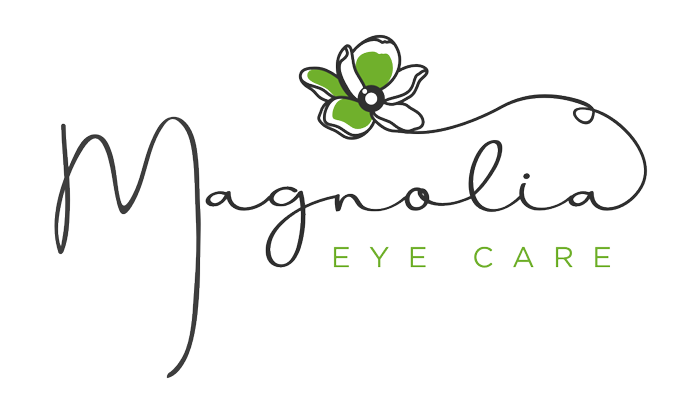June is Cataract Awareness Month, an ideal time to familiarize yourself with the causes, symptoms and treatment of one of the most common eye conditions affecting aging people worldwide.
A cataract is a progressive change to the eye’s naturally clear and flexible lens, which gradually becomes cloudy, yellow and inflexible. There is not a cure for cataracts, but there is a very effective surgical treatment to correct the condition.
Cataract Symptoms
If you’re one of the 50{292cc3b5301b60554126ab1d65e6244992d5e505d8a733ba82d7605faad99183} of the population who will have a cataract or cataract surgery by the age of 80, here are some of the visual changes you may experience with cataracts:
- Blurry vision
- Increased light sensitivity
- Double vision (seeing two images instead of only one)
- Color perception changes – for example, you may see a color as maroon, but it’s actually red or pink: The yellowing of the eye’s natural lens distorts the color you see.
- Difficulty seeing at night
- Needing more light to perform close tasks such as reading or needlework
When should I have cataract surgery?
During your regular annual comprehensive eye exam, your doctor will look for cataracts. They are a common occurrence in the aging eye, typically appearing after age 40. However, some cataracts form at a younger age due to head trauma, surgery or other specific situations.
Just because your doctor identifies a cataract doesn’t mean you require surgery. If you can conduct your daily activities and remain productive with good vision, it’s best to take a “watch and wait” approach. Cataract surgery isn’t necessary at the first sign of a cataract—surgery is needed only when it is impeding the everyday functionality or quality of life of the individual patient.
Your optometrist will watch the cataract and note any changes in its progression and your corresponding visual symptoms, sometimes over many years. There is no way to predict the rate at which a cataract will progress, or how soon you’ll need to have it surgically corrected.
However, when you complain about reduced vision and your optometrist can’t correct that visual impairment with a new pair of prescription glasses, you’ll know it’s time for surgery.
How will you know? When vision changes interfere with normal daily activities and quality of life, that’s when it’s time. For example, if you’re unable to read due to blurry vision, or unable to drive at night due to glare or an inability to read street signs, or your visual acuity makes crafting or watching TV difficult—then it’s likely time to consider cataract correction. The surgery is a routine outpatient procedure with an extremely high success rate of up to 98{292cc3b5301b60554126ab1d65e6244992d5e505d8a733ba82d7605faad99183}.
What is involved with cataract surgery?
Cataract surgery is the most common surgery performed on older adults. The good news is that it is well-tolerated, and most patients are very pleased with the outcome. The visual problems that cataracts cause are corrected after a successful cataract surgery. There are even options to fix ongoing vision problems via multifocal implants that enable patients to see clearly both at a distance and up-close.
Cataract surgery involves removing the hardened, cloudy lens of the eye and replacing it with a long-lasting, man-made intraocular lens, or IOL. This lens will restore your clear vision and in most cases, improve your visual acuity. The procedure itself is typically conducted on an outpatient basis, and takes between 5 and 10 minutes to perform (this doesn’t include pre-surgical preparation or recovery, so you’ll likely be in the surgical center for a few hours from start to finish).
If both eyes have cataracts requiring surgery—which is a common occurrence—the surgeries are most often performed two or more weeks apart. This enables your surgeon to ensure that the first surgery went well and for you to recover good vision with your “new” eye lens before operating on the “old” one.
What are the outcomes of cataract surgery?
The first cataract surgery that removed the eye’s natural lens was performed in 1748! At that time, there wasn’t a replacement lens available, so patients had to wear very thick glasses to see clearly after surgery. As you might imagine, in the 271 years since, modern medicine has made tremendous improvements in technique and success.
Cataract surgery is extremely successful in a wide range of patients. The most concerning complication is infection. To prevent it, a series of antibiotic drops are placed in the eye several times a day both before and after the procedure. Sometimes patients are required to adhere to an eyedrop regimen for up to six weeks per eye.
Many patients tell us that the “worst part” of cataract correction is putting multiple eye drops in each day. But let’s bring that into perspective: For a procedure that will likely restore your vision to what you enjoyed several decades ago, putting eye drops in a few times a day is a relatively minor annoyance.
With an approximately 98{292cc3b5301b60554126ab1d65e6244992d5e505d8a733ba82d7605faad99183} rate of favorable outcomes, there’s a very high chance you will be pleased with your vision after the procedure. However, all surgeries involve risk. Complications (other than infection) include inflammation inside the eye, retinal detachment, swelling in specific areas of the eye, bleeding, glaucoma, having a piece of the cataract remaining inside the eye, worsening of existing eye conditions and a lack of vision improvement when other eye diseases such as diabetic retinopathy are present.
Here’s what one of our patients, a 78-year-old woman in good health, said one month after having cataract surgery on both eyes: “My vision is so sharp, and I can see more colors that I could before surgery. It’s like I’m seeing the way I did 20 years ago. I didn’t realize how poor my vision had gotten until I had the surgery. I was a little nervous before the procedure, but I’m so glad I went ahead with it. It’s one of the biggest quality of life improvements I’ve ever had.”
Are you ready to discuss cataract surgery?
If you’ve been diagnosed with cataracts and your visual changes are impacting your daily life, it may be time to consider surgery. Schedule an appointment with your optometrist for an evaluation, and we’ll confirm that you’re a good candidate for the procedure and refer you to a surgeon to schedule your surgery.

